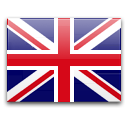Ensuring Safety: The Crucial Role of Universal Precautions in First Aid and CPR Delivery
When performing CPR, first aid, or any other procedure where there is a chance of coming into contact with blood or another body fluid, all precautions should be taken. Body fluids include saliva, sweat, vomitus, tears, and intestinal and urinary tract materials. All individuals are regarded as potentially carrying a communicable disease, according to the Universal Precautions policy.
The purpose of universal precautions is to prevent or minimize exposure to bloodborne pathogens. To this end, your first aid kit should contain personal protective equipment (PPE) such as eye protection and medical gloves, as well as a mask (or face shield) for giving breaths in case you need to deliver CPR. In the realm of emergency care, safeguarding both responders and patients against potential health risks is paramount.
This article delves into the essential practice of Universal Precautions during the delivery of first aid or CPR. We will explore the critical role of Personal Protective Equipment (PPE) in creating a barrier against pathogens, the immediate steps to take when exposed to blood or bodily fluids, precautions to prevent needle stick injuries, and the proper technique for removing protective gloves to minimize contamination risks. By grasping these fundamental principles, responders can navigate the challenges of medical emergencies while prioritizing safety and minimizing potential health hazards.
Use Personal Protective Equipment (PPE)
To protect yourself from bloodborne pathogens, take the following precautions:
- Wear PPE whenever possible (Figure 1.7).
- Wear disposable protective gloves whenever you give first aid.
- Wear eye protection if the casualty is bleeding.
- All contaminated material should be disposed of in a biohazard waste bag or as required by your workplace. Follow your company's instructions for disposing of biohazard waste bags.
- Clean all contaminated surfaces with a household cleaner that contains soap or detergent.
- After you’ve properly removed your gloves, wash your hands thoroughly with soap and water for at least 20 seconds.
Because some people are allergic to latex, it is important that first aiders carry disposable, latex free gloves at all times. Nitrile and vinyl gloves are a good alternative to latex.
Exposures to Blood
When possible, you should always wear PPE. However, if the person's blood comes into contact with your skin or splashes into your eyes or mouth, take the following actions:
- Take off your gloves if you are wearing them.
- Quickly wash your hands and rinse the contact area with soap and a lot of water for at least 20 seconds.
- Affected mucous membranes (mouth) should be flushed with large amounts of water. The eyes should be flushed gently.
- Note the date, time, type of exposure, and how the incident occurred.
- Contact a healthcare provider as soon as possible.
Needle Stick Injury
The principal risk associated with needle stick injuries is contracting blood-borne viruses, such as HIV (AIDS) and HBV (hepatitis B), although the risks are quite low that the discarded needle is infected with AIDS, Hepatitis B or Hepatitis C.
The most common injuries from sharp objects are needle sticks, typically on the index finger and thumb. Needle-stick injuries account for up to 80% of all accidental exposures to blood.
Measures taken to reduce the risk of needle-stick injuries include:
Workers who may come into contact with blood or body fluids should receive hepatitis B vaccinations.
Follow all safety procedures in the workplace.
- Never bend or snap used needles.
- Never recap a needle.
- Always place used needles into a clearly labeled and puncture-proof sharps-approved container.
- Report to the management.
- Consult a healthcare provider.
Remove Protective Gloves Properly
Because of the risk of infection, using protective gloves and taking them off correctly are important steps when it comes to your safety and the safety of others.
Always dispose of protective gloves properly so that anyone else who comes in contact with the biohazard waste bag does not get exposed to blood or body fluids.
Here is the correct way to remove protective gloves (Figure 1.8).
- Grasp the outside of one glove at the wrist.
- Peel the glove away from your body,
- Hold the glove you just removed in your gloved hand.
- Peel off the second glove by putting your fingers inside the glove at the top of your wrist.
- Turn the second glove inside out while pulling it away from your body, leaving the first glove inside the second.
- Dispose of the gloves safely. Do not reuse the gloves.
- Put the gloves in a biohazard waste bag.
- If you do not have a biohazard waste bag, put the gloves in a plastic bag that can be sealed before disposing of it.
- Clean your hands immediately after removing gloves.
Practice Good Hand Hygiene
Hand hygiene is one of the best practices to protect yourself from bloodborne pathogens and prevent the spread of infections. You should always wash your hands, even if you are wearing protective gloves.
Washing hands with soap and water is the best way to get rid of germs in most situations.
Here are the five steps to washing your hands the right way:
- Wet your hands with clean, running water (warm or cold), turn off the tap, and apply soap.
- Lather your hands by rubbing them together with the soap. Lather the backs of your hands, between your fingers, and under your nails.
- Scrub your hands for at least 20 seconds. Need a timer? Hum the “Happy Birthday” song from beginning to end twice.
- Rinse your hands well under clean, running water.
- Dry your hands using a clean towel or air dry them. If possible, use your paper towel to turn off the faucet.
Conclusion
In conclusion, adhering to the principles of Universal Precautions when delivering first aid or CPR is paramount for the safety of both the responder and the patient.
Personal Protective Equipment (PPE) stands as the first line of defense, creating a barrier between potential pathogens and the responder's skin. Vigilance in donning gloves, masks, and other appropriate gear can substantially reduce the risk of exposure to bodily fluids and bloodborne pathogens.
Equally crucial is the awareness of how to react swiftly and effectively in the event of exposures to blood or other potentially infectious materials, initiating immediate cleansing and seeking medical advice.
Needle stick injuries, a potential hazard in medical situations, emphasize the necessity of safe disposal practices and the responsible use of sharps.
Furthermore, mastering the art of removing protective gloves without contaminating oneself requires a step-by-step technique to avoid accidental exposure.
By following these guidelines diligently, responders can contribute to a safer healthcare environment, safeguarding themselves and those they aid from potential health risks. In the realm of first aid and CPR, understanding and implementing Universal Precautions can truly be the difference between a life-saving intervention and an unintended health crisis.



